This post may contain affiliate links. By clicking and making a purchase through the links, I earn a small commission at no extra cost to you. See my disclaimer for more information. This and display ads allow me to keep the site up to date and give back.
One of my main motivations for traveling is the opportunity to encounter new wildlife. We live in an amazing world full of incredible animals, but sometimes it can be difficult to find a way to see them that’s ethical.
One responsible way to see wildlife is to volunteer at a wildlife sanctuary or on a conservation project. Not only is this a great way to get up close with animals but it can also alleviate some of the stress of long-term travel by reducing expenses and give you a break from constantly moving around.
While traveling through South America, I decided to volunteer at La Senda Verde Wildlife Sanctuary in Bolivia which was overall a wonderful experience. If you’re considering volunteering at La Senda Verde, read this first so you know what to expect.
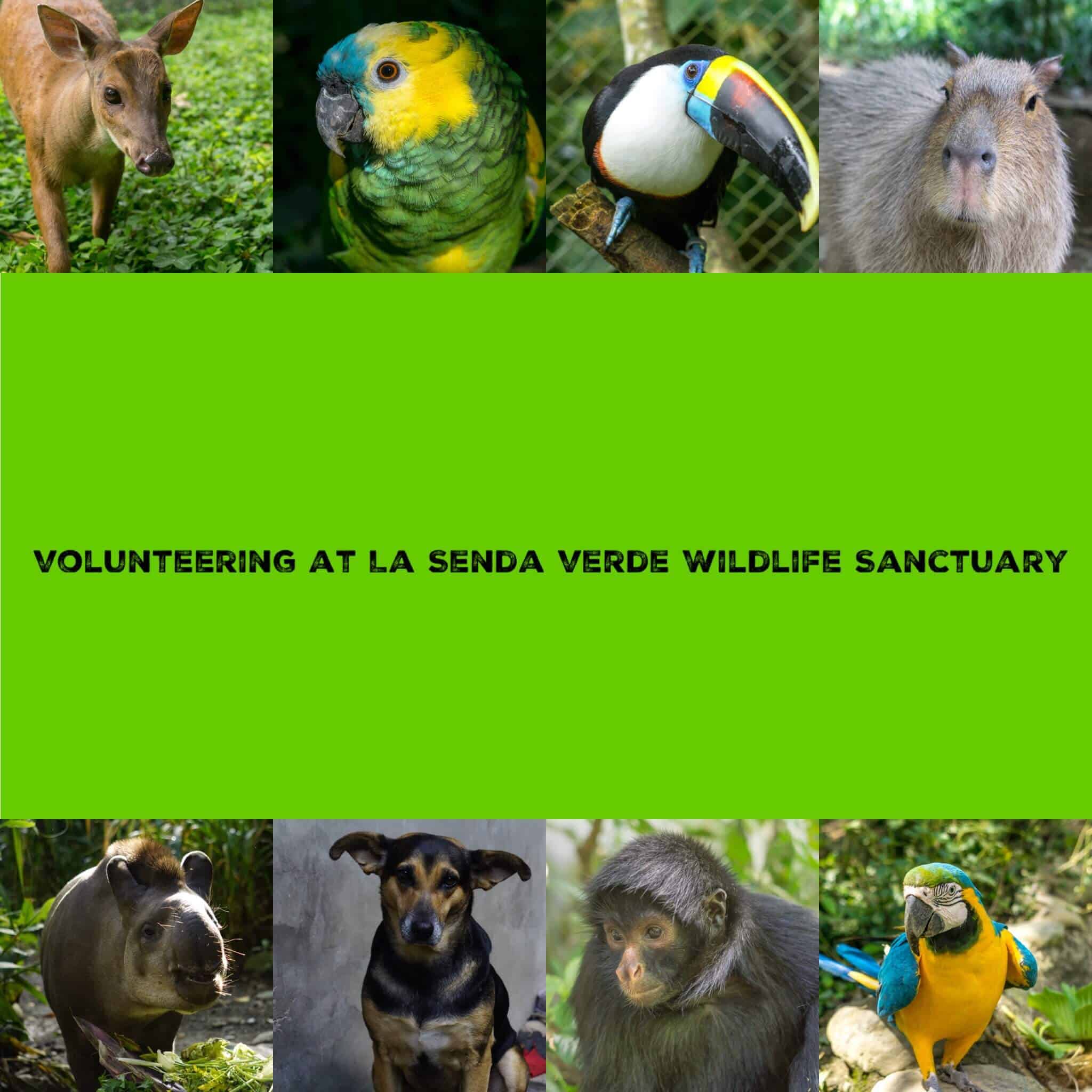
This post was last updated January 31st, 2019
What is La Senda Verde?
La Senda Verde is a wildlife sanctuary with the mission to take care of rescued wild animals that are victims of illegal trafficking, cruelty, and habitat loss. Bolivia has significant problems with animal trafficking which is how the organization became what it is today.
La Senda Verde first operated as an eco lodge, which led to the owners becoming aware of the problems with animal trafficking in that area. As a response, the owners decided to open up their doors to be a safe place for animals that are victims of illegal trafficking and cruelty. It started with one monkey, but has grown to home over 700 animals.
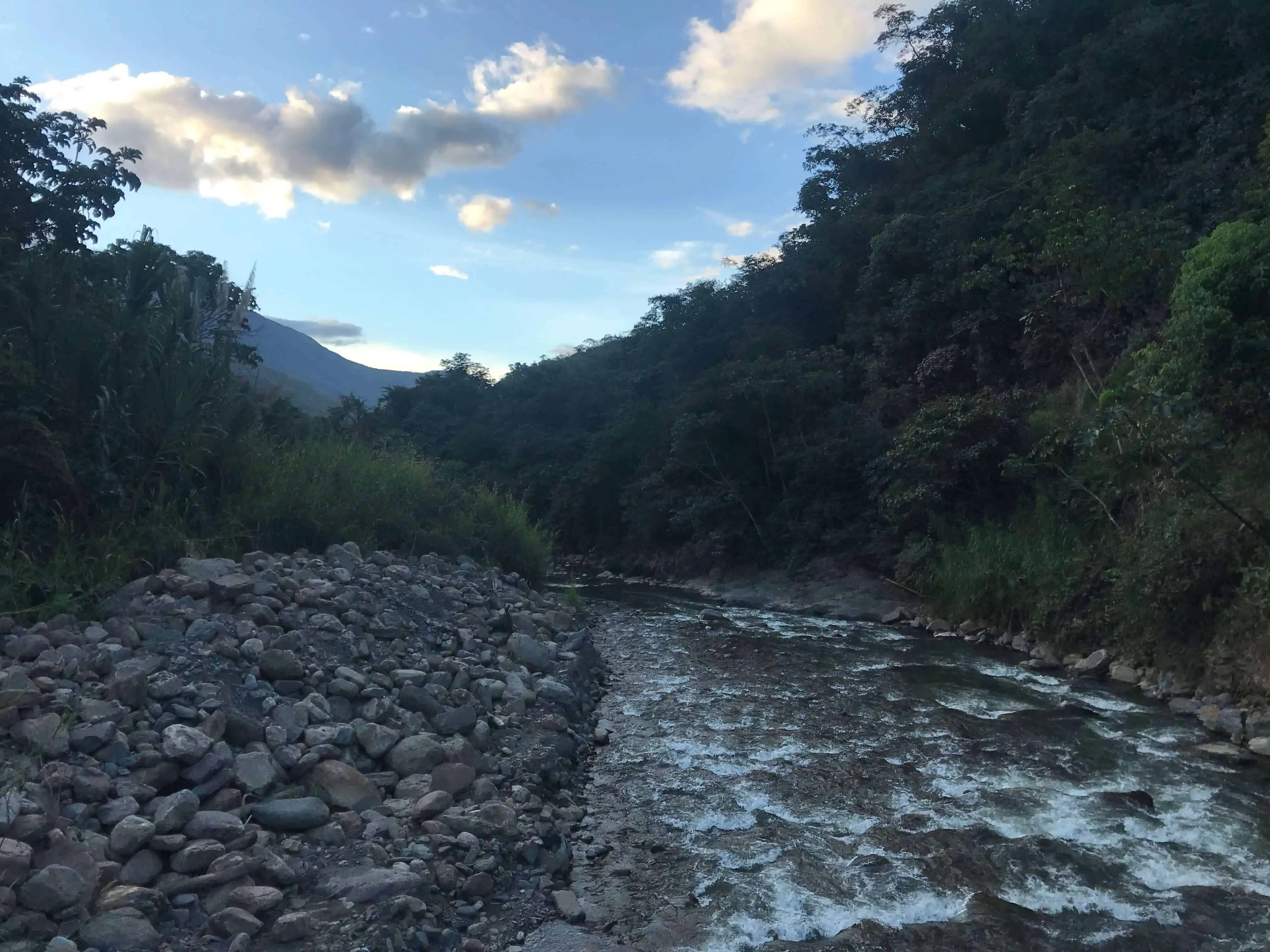
As it stands now Bolivian law forbids the release of any captured animal back into the wild. This means the sanctuary is a permanent home for the animals once they arrive.
The organization does a great job of providing a natural environment for the animals to live in. Instead of a typical sanctuary set up where the animals are encaged, La Senda Verde has the opposite. There is a human enclosure and the animals live outside of it. This means that the monkeys are able to roam free around the area as they please, but of course they often try to get into the human enclosure since this is where the food comes from!
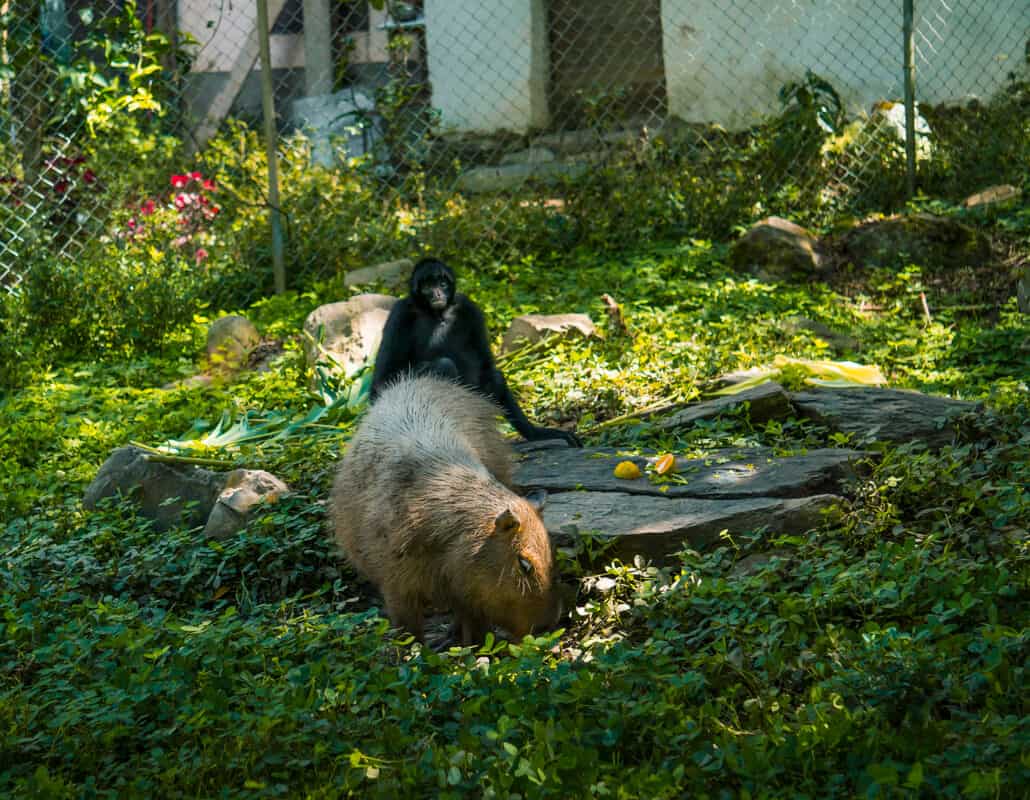
Getting to La Senda Verde
La Senda Verde is about three hours from the La Paz International Airport by car. You can either have the organization arrange a transfer from the airport, or find your own way there. I opted to do the latter to save on costs.
To get there on your own you can get a bus from La Paz to the town of Coroico for just a couple of dollars. The bus takes about 3 hours and goes through the beautiful mountain ranges of Bolivia. The bus will drop you off at the main centre of Coroico, and from there you can get a taxi for $5 to La Senda Verde.
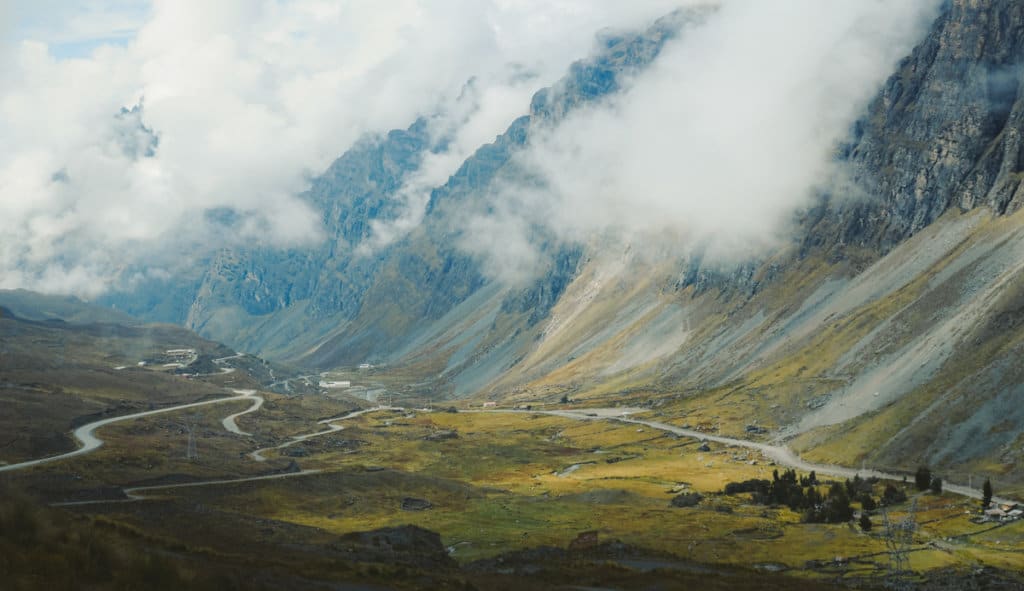
Arriving at La Senda Verde
Depending on what time you arrive at La Senda Verde you may start your volunteer duties that day (i.e. if you arrive early in the morning). You first meet with the volunteer coordinator who will give a short information session on the volunteer program as well as a guided tour of the area. The coordinator is usually busy running around so you may have to wait a couple of days for the tour. Expect to be put to work right away!
Areas of work
During the day volunteers work on a rotational basis in different areas, where they assist with cleaning, feeding, and monitoring the animal’s behavior. The areas of work are specials, big cats/bears, monkeys, quarantine/tortoises, and the aviary. There are also special projects that take place depending on how many volunteering they have at that time. Another task of the volunteers is to provide tours to people who visit the sanctuary.
Specials
The specials area includes the one-off animals that do not fit into another area. While I was there this included a capybara, a tapir, several deer, an armadillo, and two toucans.
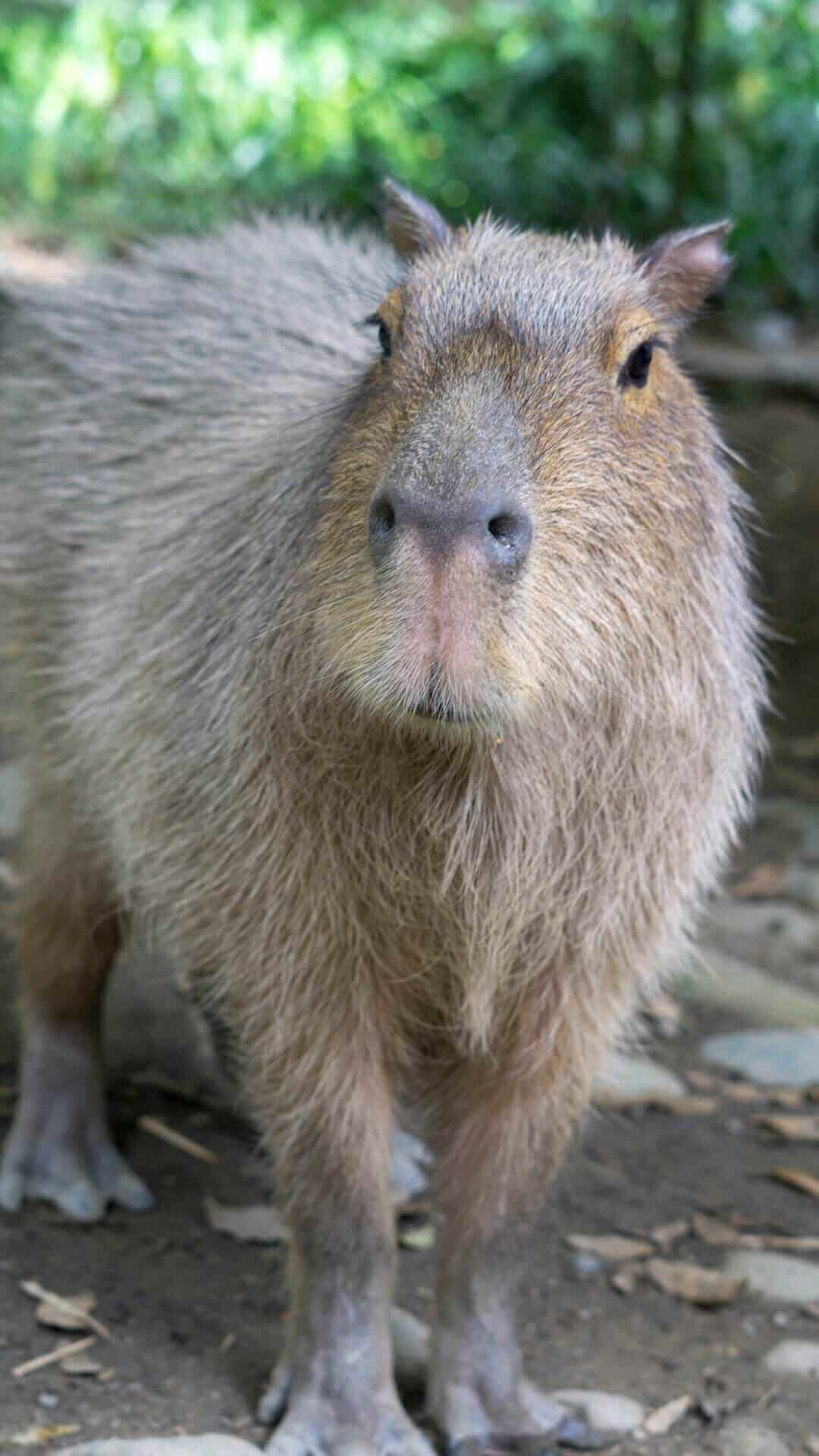
Capybaras are the largest rodent in the world and are native to South America. Cappy was taken from the wild by a family who thought she would make a good pet. After a while the family realized that they had no idea how to take care of a capybara, and surrendered her to the sanctuary. Cappy was one of my favourite animals to work with. She was super cute and friendly, but not good at taking selfies.
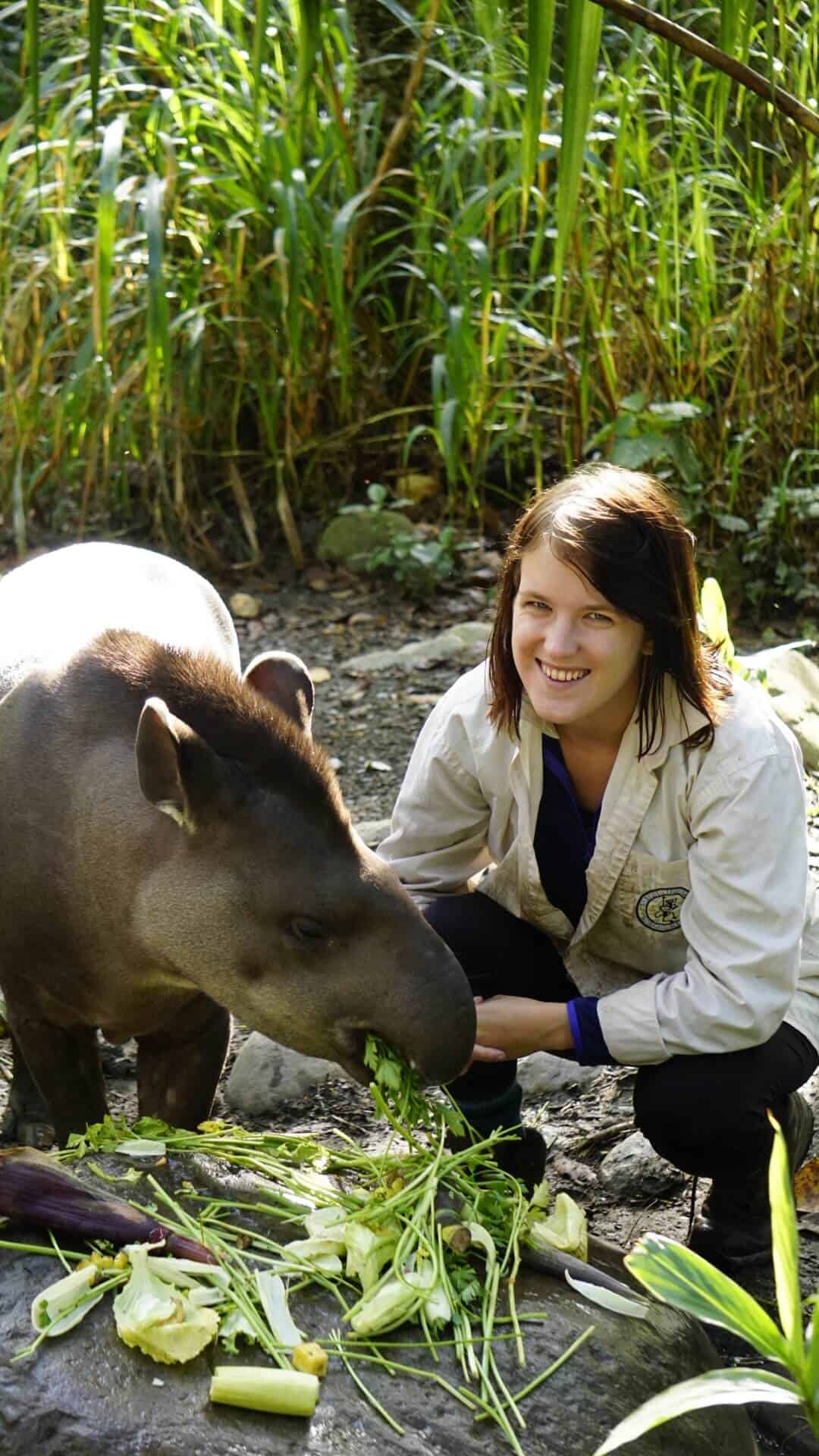
Tapirs are related to Rhinoceros genetically, but have a skull shaped similar to a horse. The population is at risk because they take three years to raise a young and can only have one baby at a time. Tapirs are the largest species in South America!
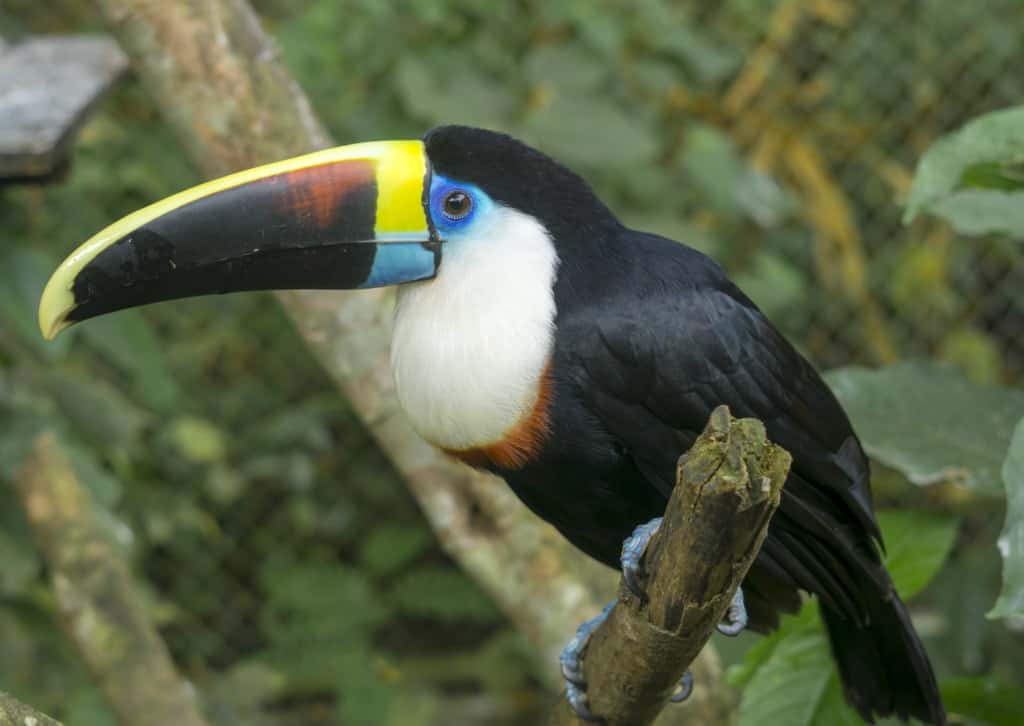
The sanctuary has two toucans which are kept separate from the other birds as they are omnivores, and could potentially eat the other birds. The volunteers working in the specials area are responsible taking care of the two toucans. This is a fun area to work because you get to try and train the Toucans while feeding them.

Tatu the Armadillo was the strangest creature at the sanctuary, but I loved him. He’s a fatty little creature with a hard shell and a few hairs. He would would run around the tortoise area eating bugs all day, sometimes trying to hump the legs of guests. So ridiculous!
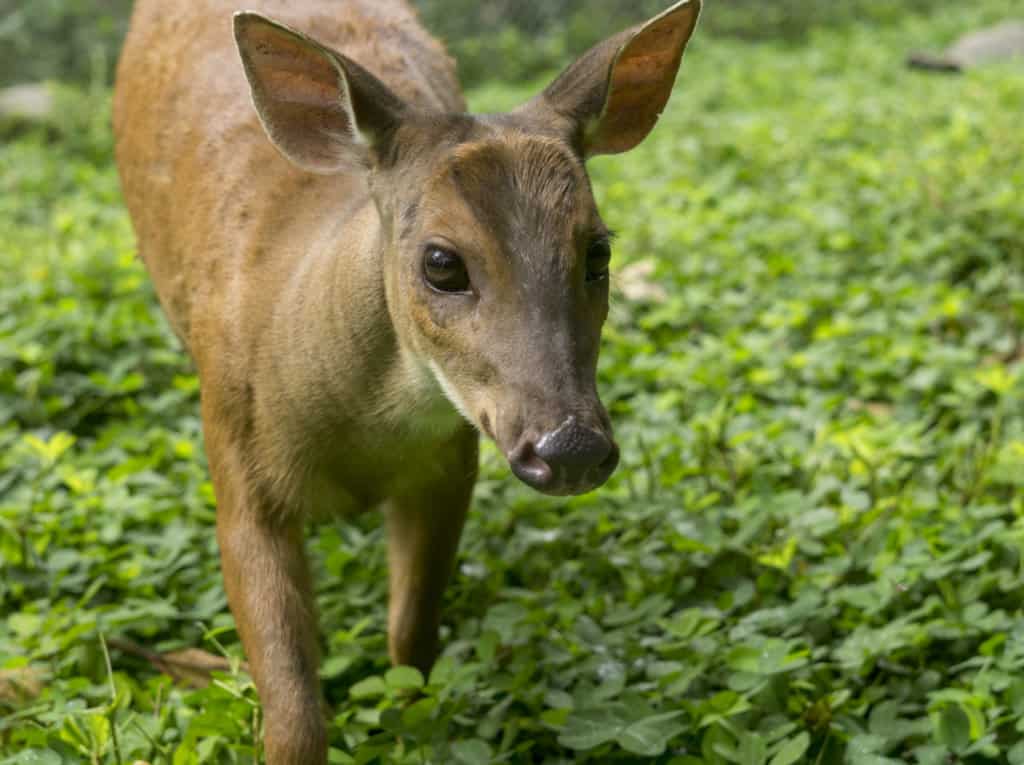
The sanctuary is also home to three beautiful deer which are currently kept separate from each other because they don’t get along. One deer was in the enclosure with the Capybara and they were basically best friends. Awww!
Big Cats and Bears
A specialized full-time worker is responsible for the feeding and cleaning of the big cats and bears, but he brings volunteers along with him to assist. However, these are generally longer term volunteers who have an interest in this area. If you only volunteer at La Senda Verde for two weeks you will likely not work in this area, but if you ask the coordinator he may let you go for a day.
Even if you don’t get to work in this area, someone will take you to visit the bears and cats as much as you want.
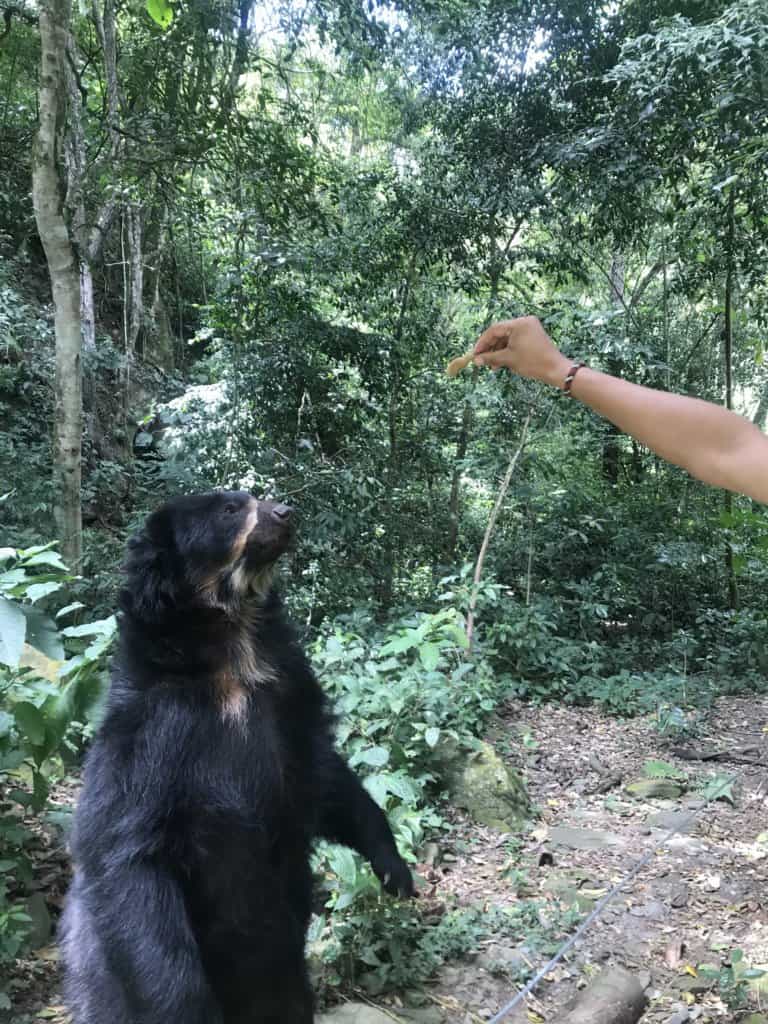
The sanctuary is home to three Andean bears, a species native to South America. The bear pictured above was brought in because she was found tied up outside someone’s home. They told the police that the bear’s mother abandoned the cub after running into some dogs (sounds like a big lie). Anyway, the police took her from the family’s home and brought her to La Senda Verde where she is free to roam the biggest bear enclosure in the world.
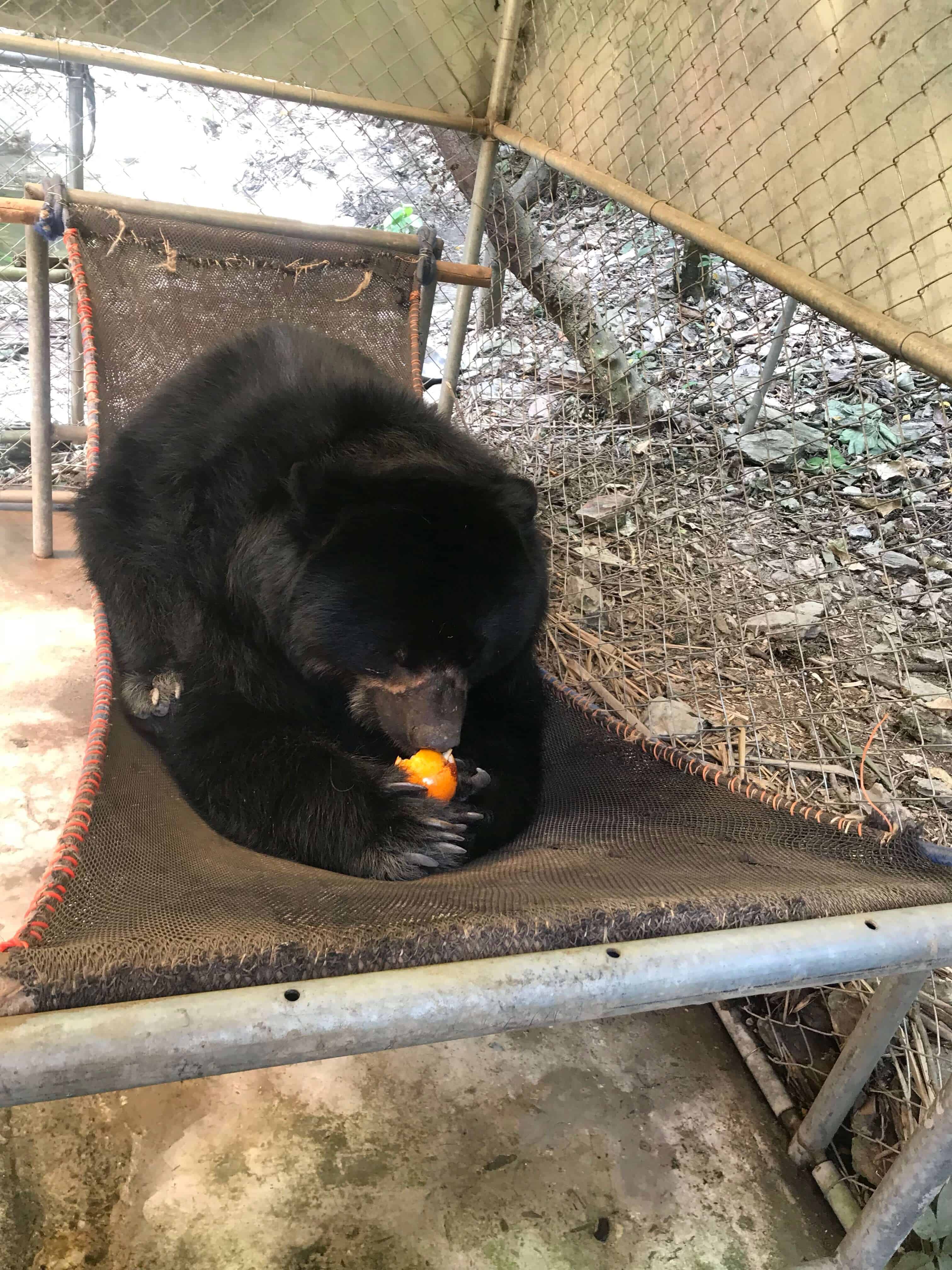
Ajayu is a blind bear because local people attacked him with rocks after he wandered into the town of Cochabamba. Afterward he was brought to the La Paz zoo where he refused to eat and had a low quality of life. La Senda Verde heard Ajayus’ story and offered to try and give him a better quality of life.
After he was brought to the sanctuary Ajayu started eating again, and is now the most active bear at La Senda Verde. Yay!
Big Cats
La Senda Verde is also home to a couple of wild cat species.
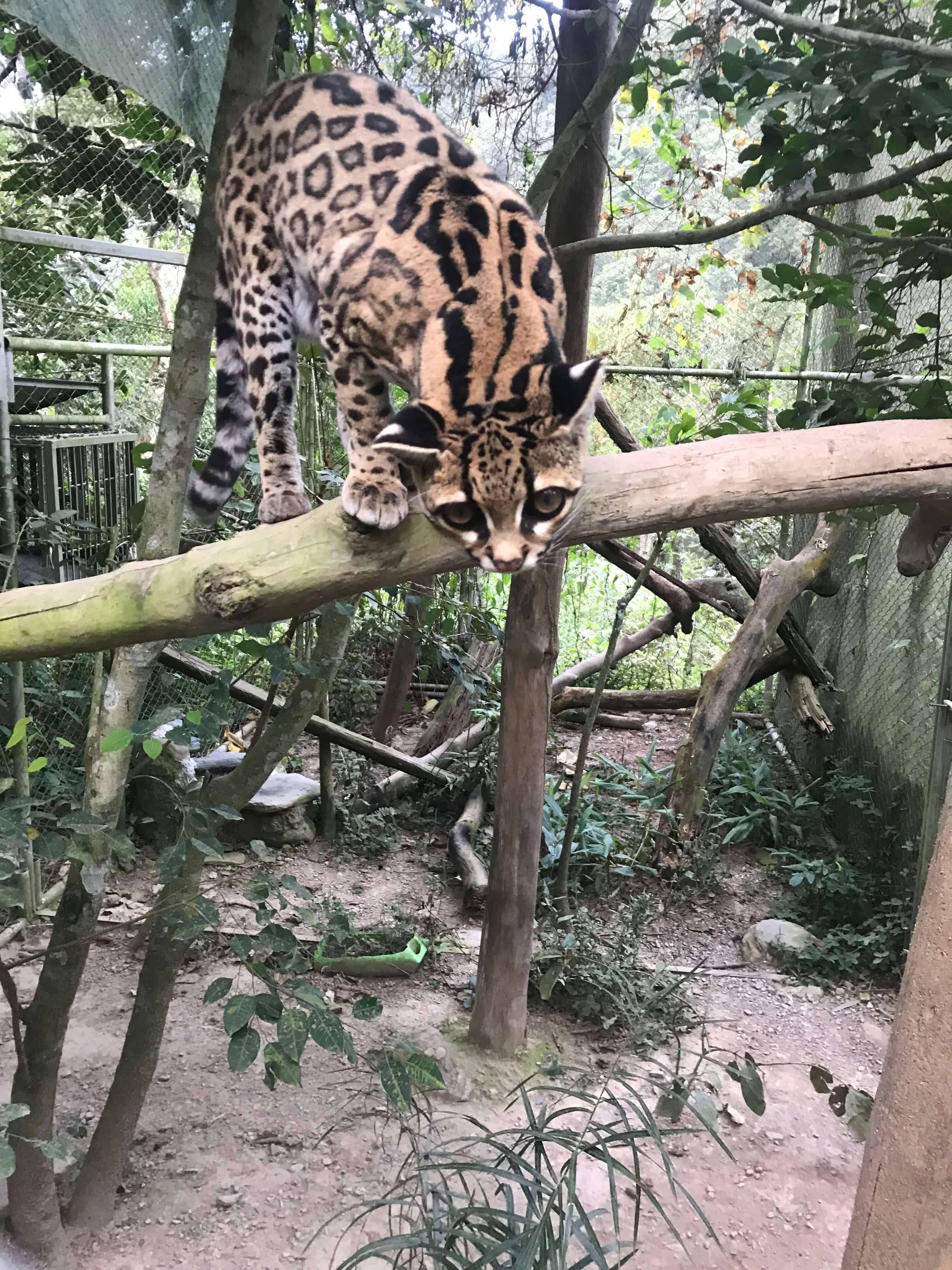
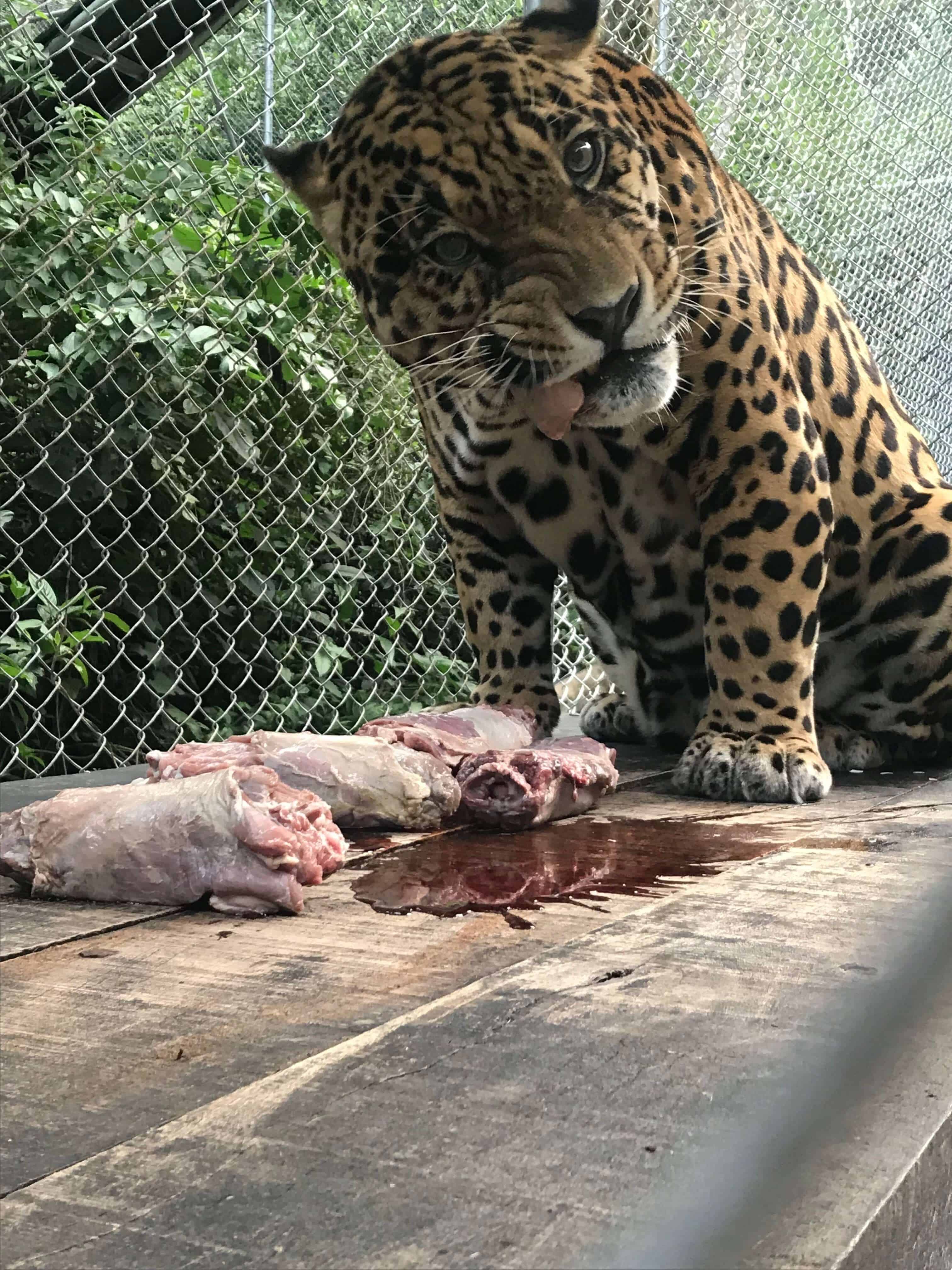
Pictured above is Cubai the jaguar. Cubai was raised as a pet in La Paz but began having health issues due to the high altitude of the city. The family surrendered him to La Senda Verde where his health improved. The sanctuary is currently raising funds to build a bigger enclosure for Cubai.
Monkeys
Monkeys were the first species to live at La Senda Verde and the most common animal that the sanctuary receives. They often get captured from the wild to be sold pets. As the monkeys reach adolescence and start tearing peoples houses apart, people realize they don’t make the best house pets. The sanctuary has 5 different species of monkey including howler, capuchin, spider, owl, and squirrel.
There is a full-time monkey worker but if you are a male volunteer you will likely work with him and the capuchin monkeys. Females aren’t allowed to work with the capuchin monkeys because some of them do not like women and it is a risk they might attack.
As a volunteer at La Senda Verde you can go with the male workers in small groups to visit the capuchin monkeys. The day I spent with the capuchin monkeys was so much fun, they love to play.
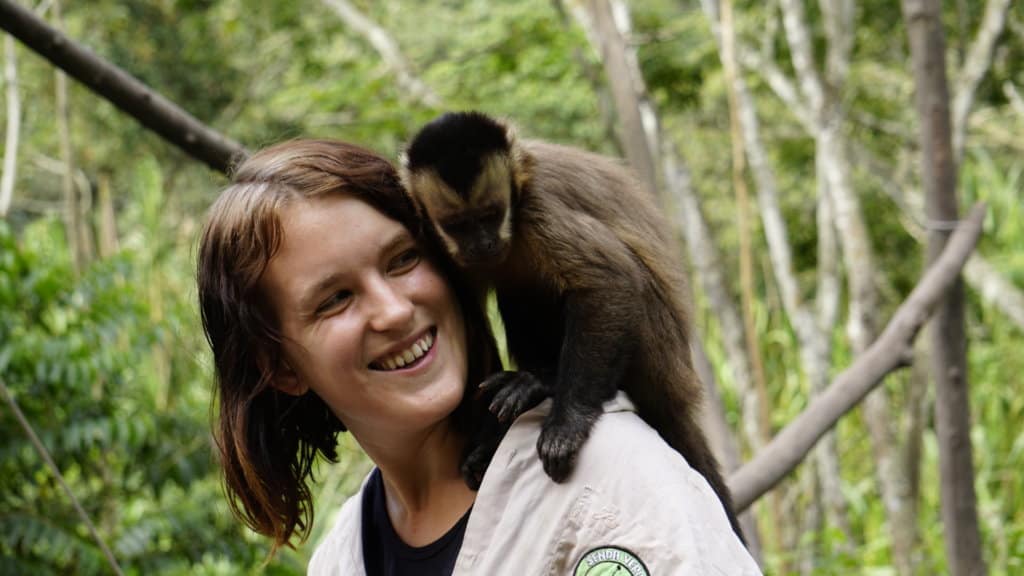
Even though female volunteers don’t get to work with the monkeys, you will still have lots of opportunity to interact with them. The monkeys wander around the sanctuary and often grab you for a quick snuggle, or to steal your banana.
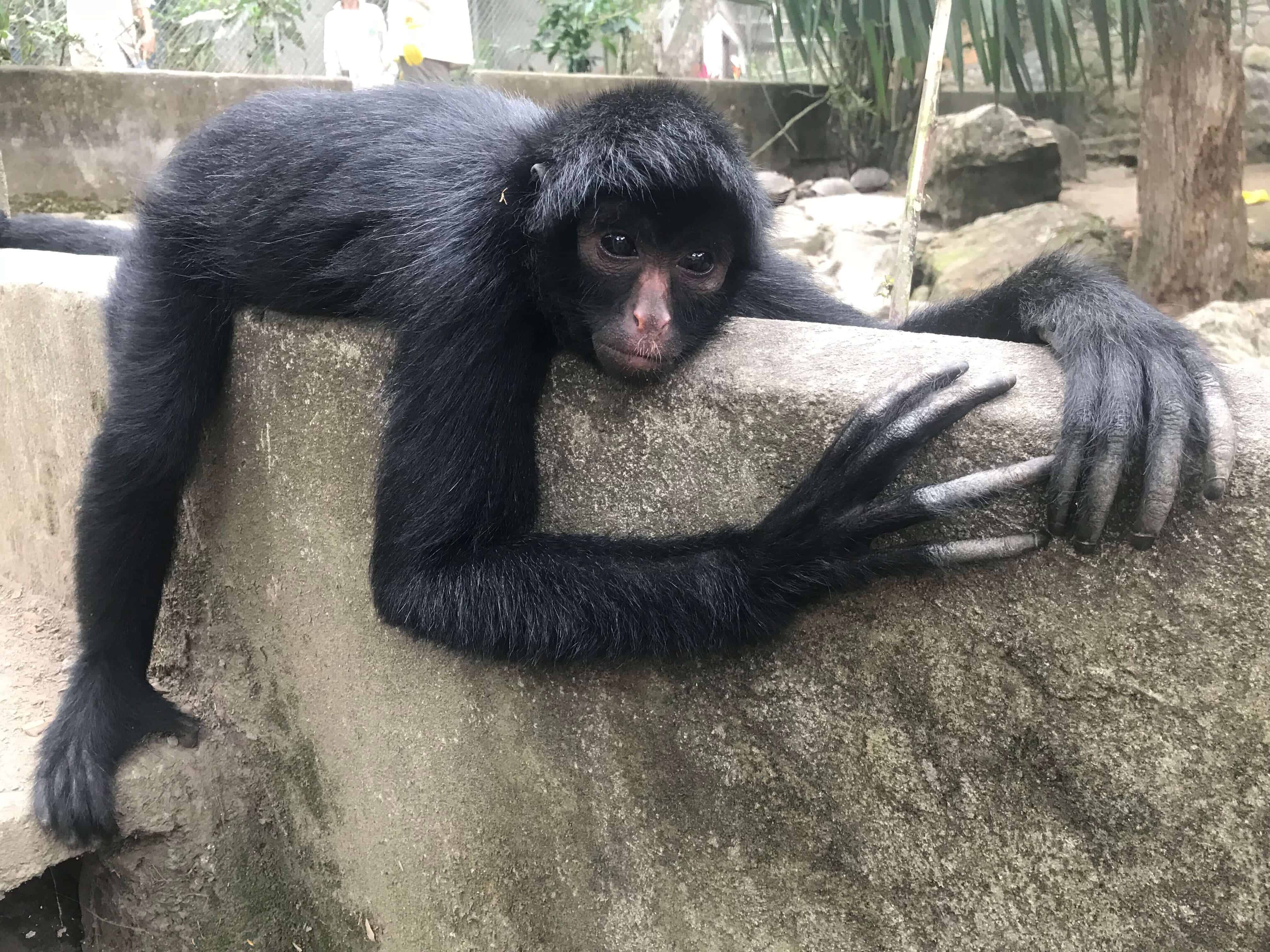
The name Spider Monkey comes from the fact that the monkeys use their tail as a 5th limb, which makes them appear like a spider as they climb their way through the jungle. Spider monkeys are the most emotional of the new world monkeys.
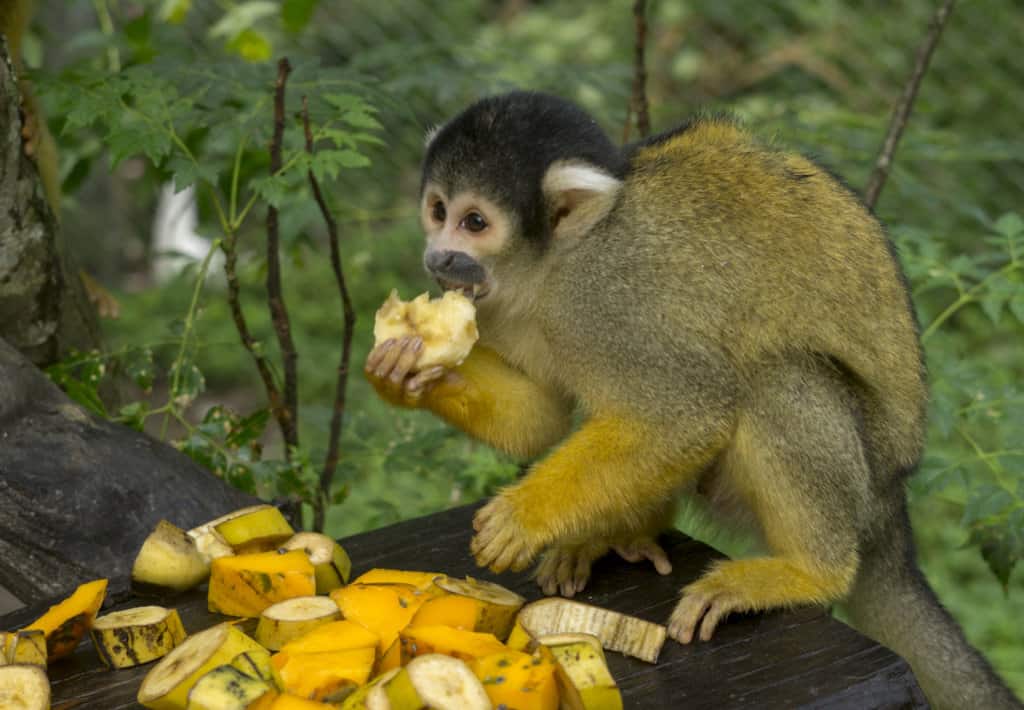
Squirrel monkeys often wander around the sanctuary, especially at breakfast time when food gets prepared for the day. They love to try and steal bananas but they’re super cute so I forgive them.
Quarantine/Tortoises
Birds are another species that often get brought to the sanctuary. When birds first arrive they go into quarantine for at least 40 days prior to the aviary to ensure they do not have diseases.
Quarantine has a much lower number of birds then the aviary and is a more relaxed area to work in. It can be boring at times, but it’s important that the quarantined birds get interaction with humans. While I was there we received 6 baby macaws. So cute!
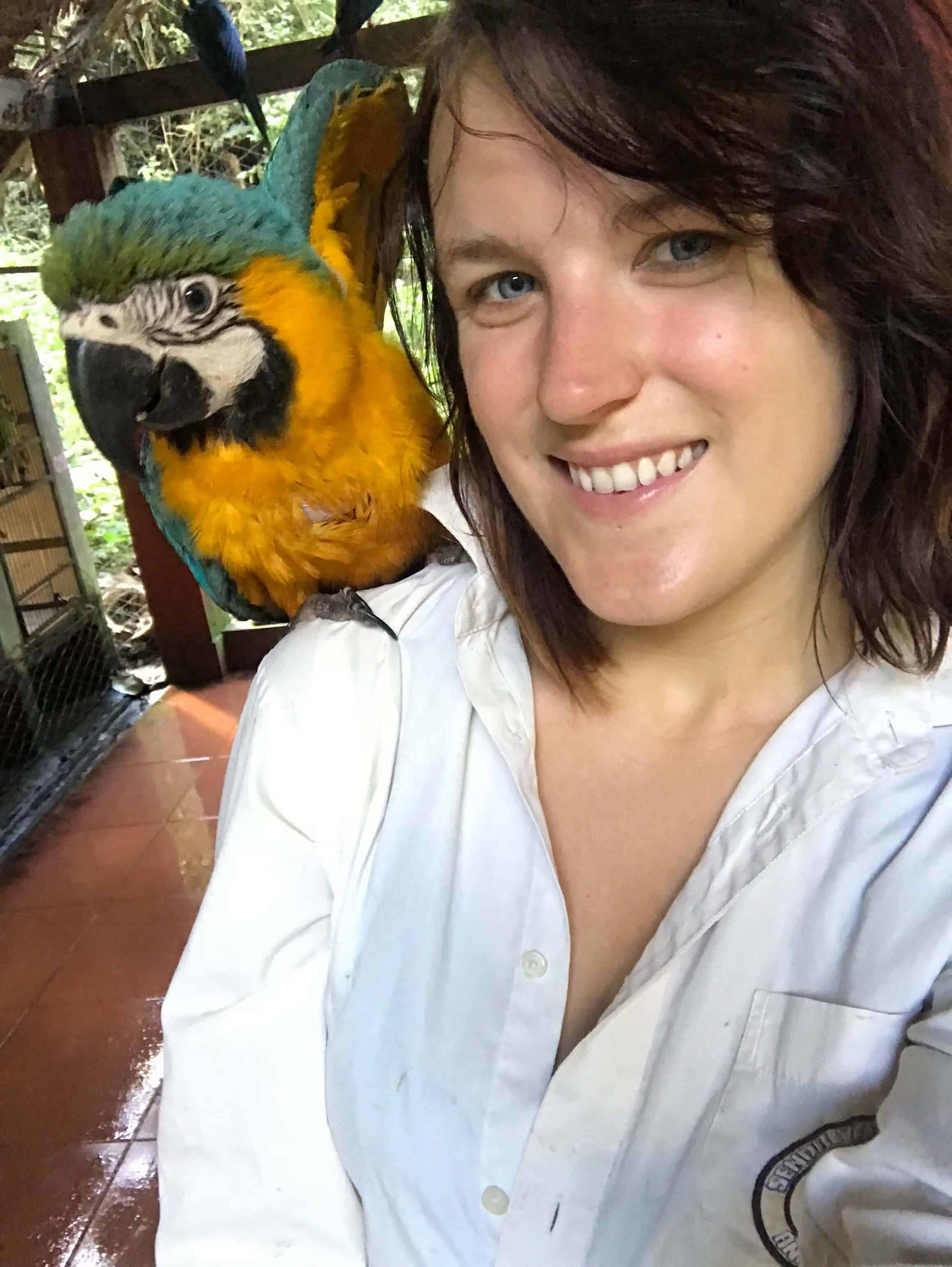
While working in the quarantine area, you are also responsible for feeding the tortoises. The sanctuary has over 70 tortoises and two different species. These include yellow-footed and red-footed tortoises, which are the largest species next to Galápagos Tortoises.
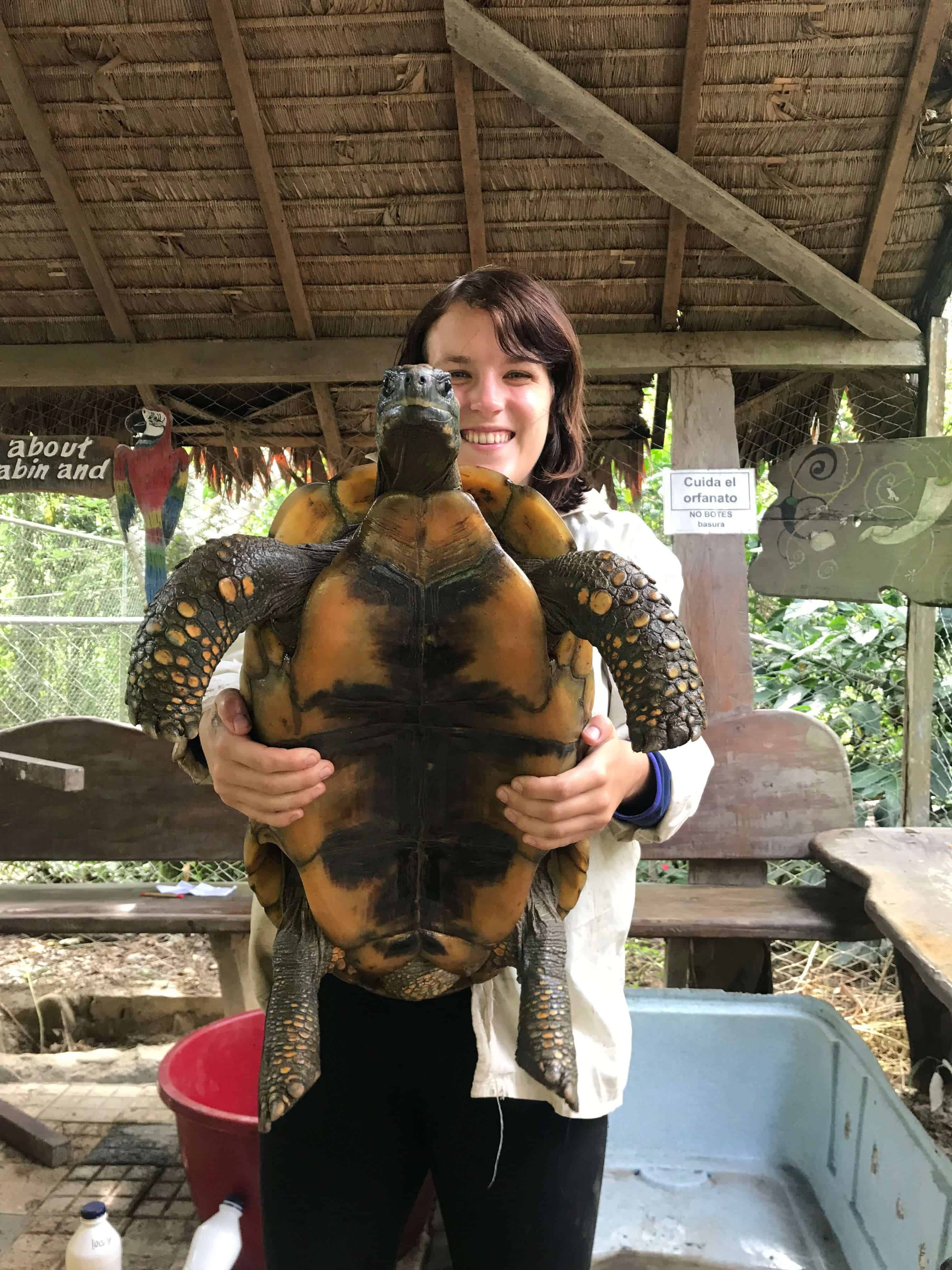
The Aviary
The aviary is the area where birds go after they get released from quarantine. Picture an open aviary with over 200 birds flying around. It can be crazy in there, especially when it’s feeding time. The birds love to come say hi and use you as a sitting post.
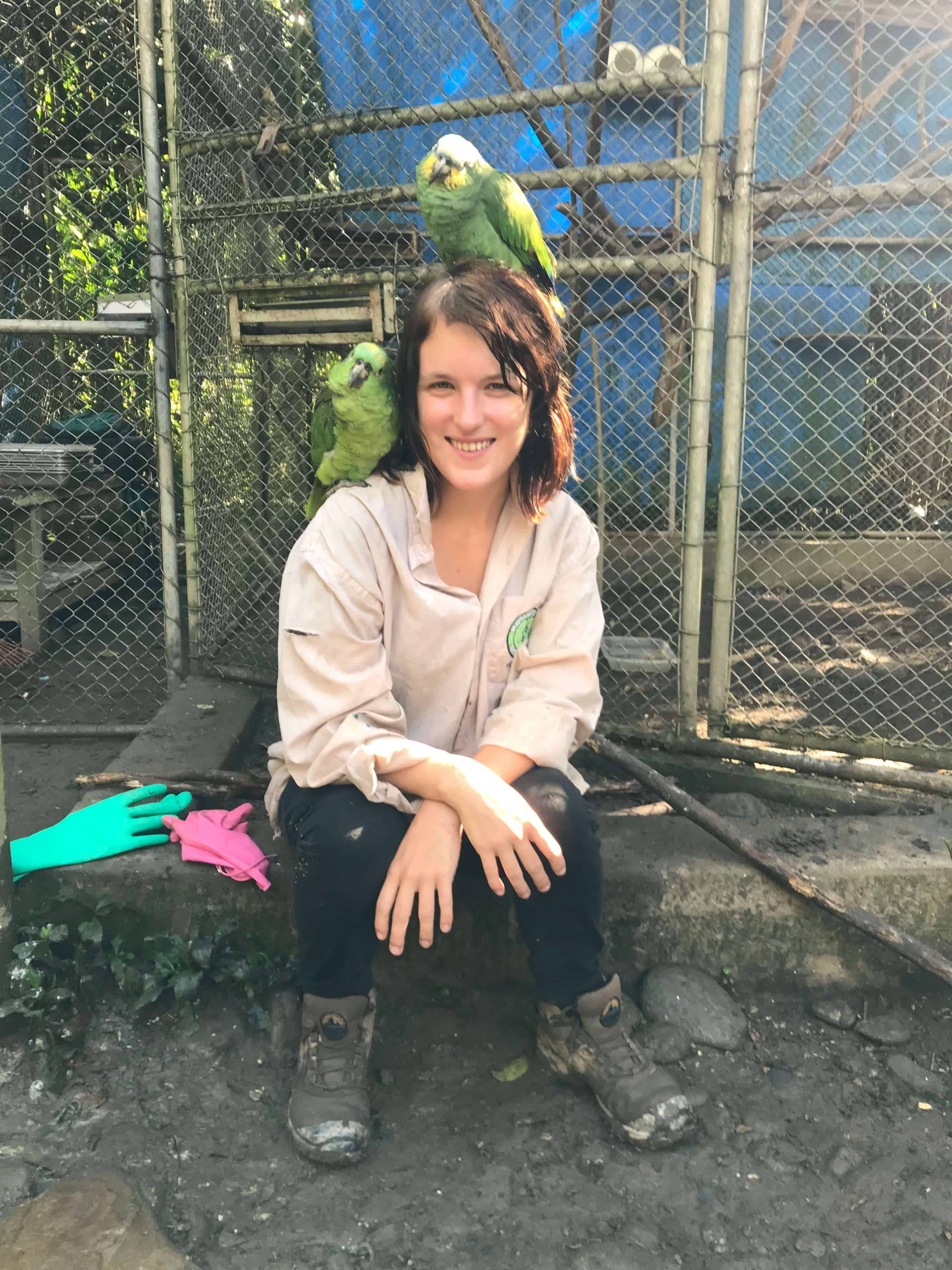
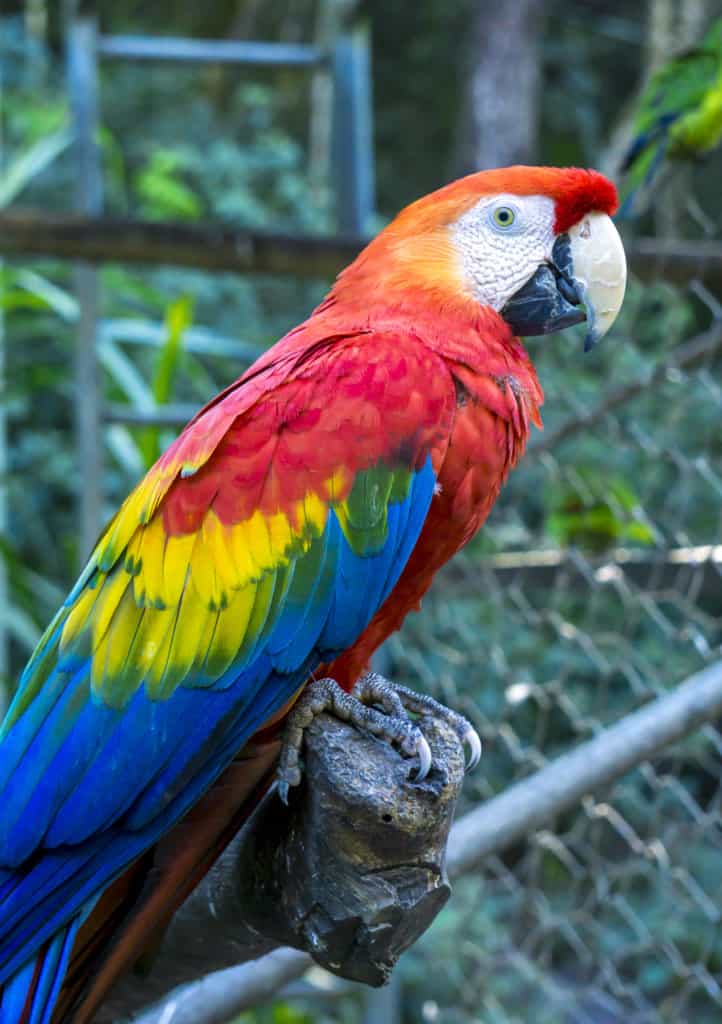
Special Projects
Depending on the number of volunteers, the coordinator may start special projects. While I was there we got to wash and polish all of the tortoises which was really fun. After we finished cleaning the tortoises they all started humping each other but couldn’t stay on because the vaseline made their shells too slippery, it was hilarious.
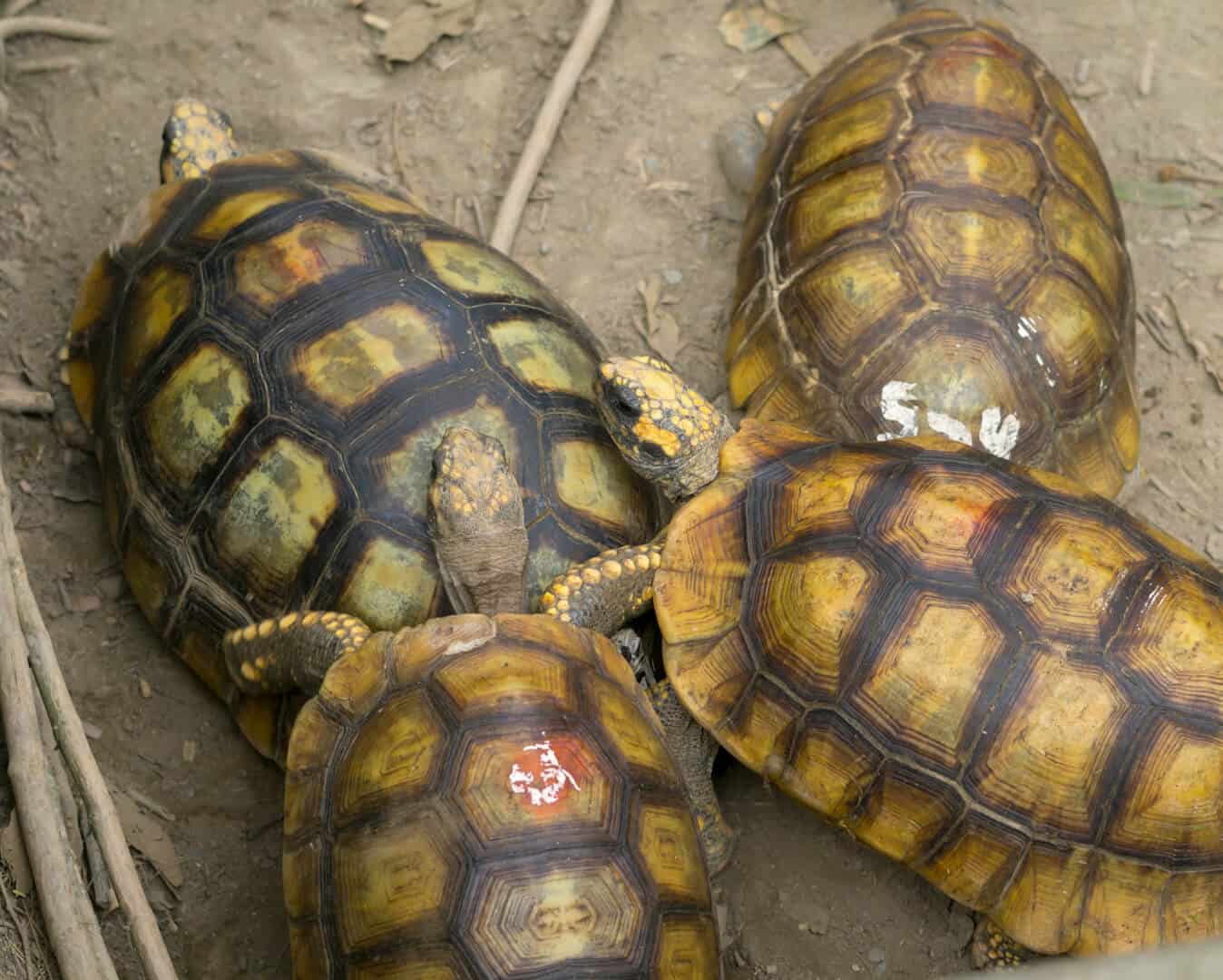
Providing Tours at La Senda Verde
Volunteers are responsible for giving tours to guests and visitors who come to the sanctuary. This is done on a rotational basis and you will likely only be put on tours for 1 or 2 days during a two-week period. The volunteer coordinator will walk you through giving a tour and ensure you are comfortable before throwing you into it, so don’t worry!
Accommodations
Volunteers stay in shared mixed dorms that are basic, with bathrooms outside the rooms. Depending on availability, there is an option to pay more and stay in private cabins or tree houses that normally get rented out to guests.
The sanctuary still operates as an eco-lodge but if there are no guests then volunteers have the option to pay more to stay in those accommodations. In my experience, the accommodation was usually free during the weekdays.
Food
Volunteers get fed three times a day at the communal kitchen, and there is an option to pay for extra snacks between meals. The food isn’t amazing, but overall pretty good. They accommodate vegetarian guests.
Many volunteers felt that the amount of food given is not enough, especially breakfast. I advise bringing extra food from outside before coming. There is a store about a 10-minute walk from the sanctuary where you can buy some snacks, but nothing particularly healthy.
Entertainment
The sanctuary is in an isolated location so there isn’t much to do around, but you will be kept busy during the day and tired in the evenings.
The nearest town is Coroico which is about 1/2 hour away by taxi. Volunteers sometimes go there together in the evening to get supplies, eat out, etc. There is no internet at the sanctuary but if you have a SIM card you may be able to get service (it wasn’t great while I was there).
There is a volunteer room where you can watch movies, play cards, ect. Otherwise, the sanctuary is in a beautiful jungle so you can just relax and enjoy the nature around you.
La Senda Verde is also home to several domestic cats and dogs which I loved playing with during my off-time.
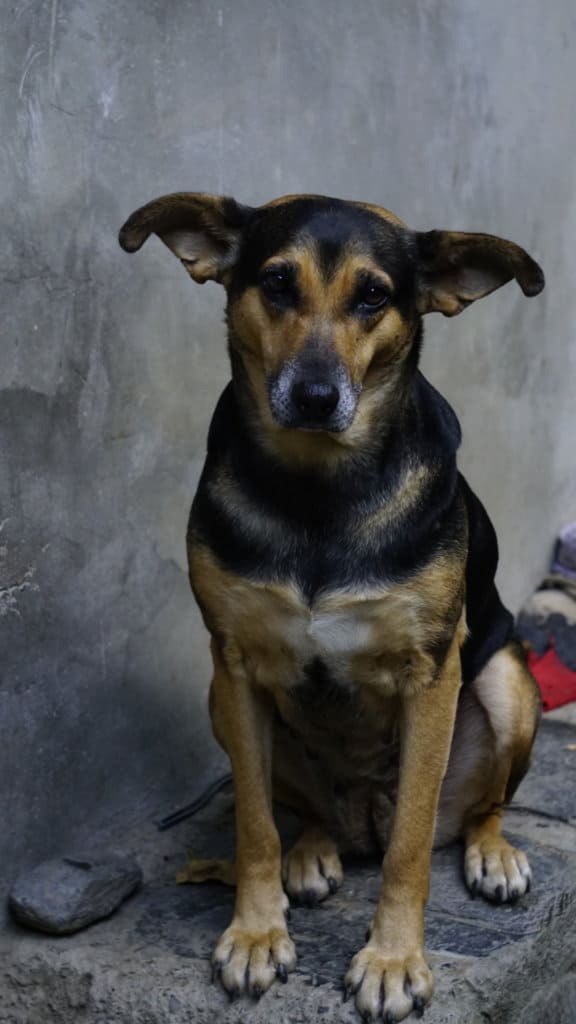
Time commitment to volunteer at the La Senda Verde
The minimum time commitment to volunteer there is two weeks. During the first two weeks, you do not get any days off. If you volunteer for longer then two weeks then you will get every second Sunday off. Volunteer Intake is on Mondays, Wednesdays, and Fridays.
Fees
The cost to volunteer is 230 USD/week and decreases the longer you stay (as of Jan 2019, check the website for current fees). A small percentage of that fee is used to cover the cost of volunteers’ food, and the remainder goes to the animals.
This is the price if you book through the organization’s website, which I recommend. Some of the other volunteers I met booked through 3rd party organizations and paid almost double that.
How to volunteer at La Senda Verde
If you are interested in volunteering with La Senda Verde, you can submit an inquiry directly through their website. Someone will be in touch with you shortly to complete your application to volunteer and provide you with all the information you need to prepare for your time there.
What to do after Volunteering at La Senda Verde in Bolivia
If you are in Bolivia you should check out the beautiful salt flats. If you’re planning to visit Chile too, you can take a 3-day tour from Bolivia to San Pedro De Atacama that includes the salt flats. This was one of my favorites tours I did in all of South America!
Conclusion
I loved my time volunteering at La Senda Verde. It was a unique experience to work hands-on with a wide variety of exotic wildlife, and learn about the problems that Bolivia faces with animal trafficking. If you want to volunteer with wildlife during your time in South America, I recommend this organization.
Even if you can’t volunteer, consider visiting La Senda Verde during your visit to Bolivia. All of the profits from tourism go towards feeding the animals, and trust me they eat a lot!
FAQ: Volunteering in La Senda Verde
Why volunteer at La Senda Verde?
Volunteering at La Senda Verde offers a unique opportunity to directly contribute to wildlife conservation, learn about animal care, and be part of a community dedicated to protecting animals in need.
Is Senda Verde safe for volunteers?
Yes, Senda Verde is safe for volunteers, with established protocols and guidelines to ensure the well-being and safety of both the volunteers and the animals in their care.
What do the people at La senda verde do to help animals?
At La Senda Verde, individuals dedicate their efforts to rescuing, rehabilitating, and providing a safe haven for animals that have been victims of illegal trafficking and habitat loss.
Where can I see capybara in Bolivia?
Capybaras can be seen in the wild in Bolivia’s wetlands and riversides, especially in the Amazon basin, and in sanctuaries like La Senda Verde.
How does volunteering help endangered animals?
Volunteering aids endangered animals by providing them with direct care, raising awareness about their plight, and supporting conservation efforts to protect their natural habitats.
How do sanctuaries help endangered animals?
Sanctuaries provide a safe environment for endangered animals to live and breed, away from threats like poaching and habitat destruction, while also raising public awareness and support for conservation.
Why do people volunteer at the zoo?
People volunteer at zoos to contribute to animal care, support conservation education, and gain hands-on experience in wildlife preservation and rehabilitation.
What is the purpose of the animal aid?
The purpose of animal aid is to provide rescue, rehabilitation, and relief to animals in distress, ensuring their well-being and survival.
What is a good reason to want to volunteer?
A good reason to volunteer is the desire to make a positive impact on the community or environment, gain new experiences, and develop personal and professional skills.
How do people greet in Bolivia?
In Bolivia, people commonly greet each other with a warm handshake or a single cheek kiss among friends and family, accompanied by a polite “Buenos días” (Good morning) or “Hola” (Hello).
Like it? Share it on Pinterest!
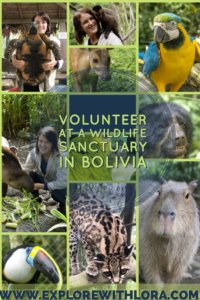
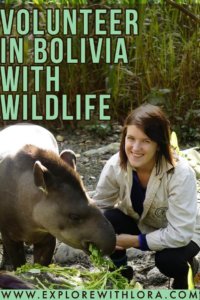

[…] Taking Care of Rescued Animals in the JunglesBy Lora Pope of Explore with Lora […]
Your view on ethnically volunteering is great. Going to pin this article, feel others can get benefits too.
Thanks for sharing! 🙂
Hi! Was there a vet on site? I am an animal science student looking for wildlife experience, however the work must be under a vet to count towards clinical hours for vet school. Thanks for sharing all your pics and advice!
Hi! Yes there are vets on site. Actually a few girls I volunteered with were doing that exact thing so you should be able to as well:)
[…] Volunteering with wildlife is a great way to spend a sabbatical. Not only is it an amazing experience to work hands-on with exotic animals, but it can help keep costs low and give you a break if you have been traveling quickly from place to place. One worthy organization to volunteer at is La Senda Verde Wildlife Sanctuary in Bolivia. […]
Hi Lora !
I’m planning to volunteer at LSV too.
I just wanted to clarify the fact that you said it costs 400 US dollars for the first two weeks.
However, on the official website it is written 200 US dollars for the first two weeks, so is it 200 dollars a week and i’ll have to pay 400 for two weeks ?
Hi Lora !
I’m thinking of volunteering at LSV too. I just wanted to ask about the costs, because on LSV’s website it is written 200 US dollars for the first two weeks, and you wrote 400. Is it 200 US dollars a week ?
Hi Stella! It was $400 total, so yes $200 per week. You have to pay a deposit of one week ($200) before coming and then can pay the rest when you get there. Hope that helps!
Dear Lora,
Do you have pictures from the accommodations also?
Greetings,
Johanna
Hi Johanna,
Unfortunately I don’t have pictures of the actual accommodation. The volunteers stay in a shared dormitory that’s very basic, 6 bunk beds in each room and an outside bathroom. Volunteers also have the option to pay a bit more and have their own private cabin!
Thanks for your speedy reply 🙂 I will be travelling solo for that part of my trip. Is it safe to get to La Senda Verde by yourself? How did you get there? Did you meet lots of friendly people when you were volunteering there?
Yes it’s safe to go by yourself! I took a bus from la Paz to Coroico and then a taxi from there, i think the bus was like $10. Or if you want the shelter can pick you up but it’s a bit more expensive!
Everyone I volunteered with there was really nice and I ended up travelling with some of them after!
Hi Lora, I am thinking of volunteering at La Senda Verde too! How long did you volunteer for? I am thinking 2 or 3 weeks.
Hi Christina, I volunteered there for 2 weeks which is the minimum. You could always go for two and then extend, they love longer term volunteers!